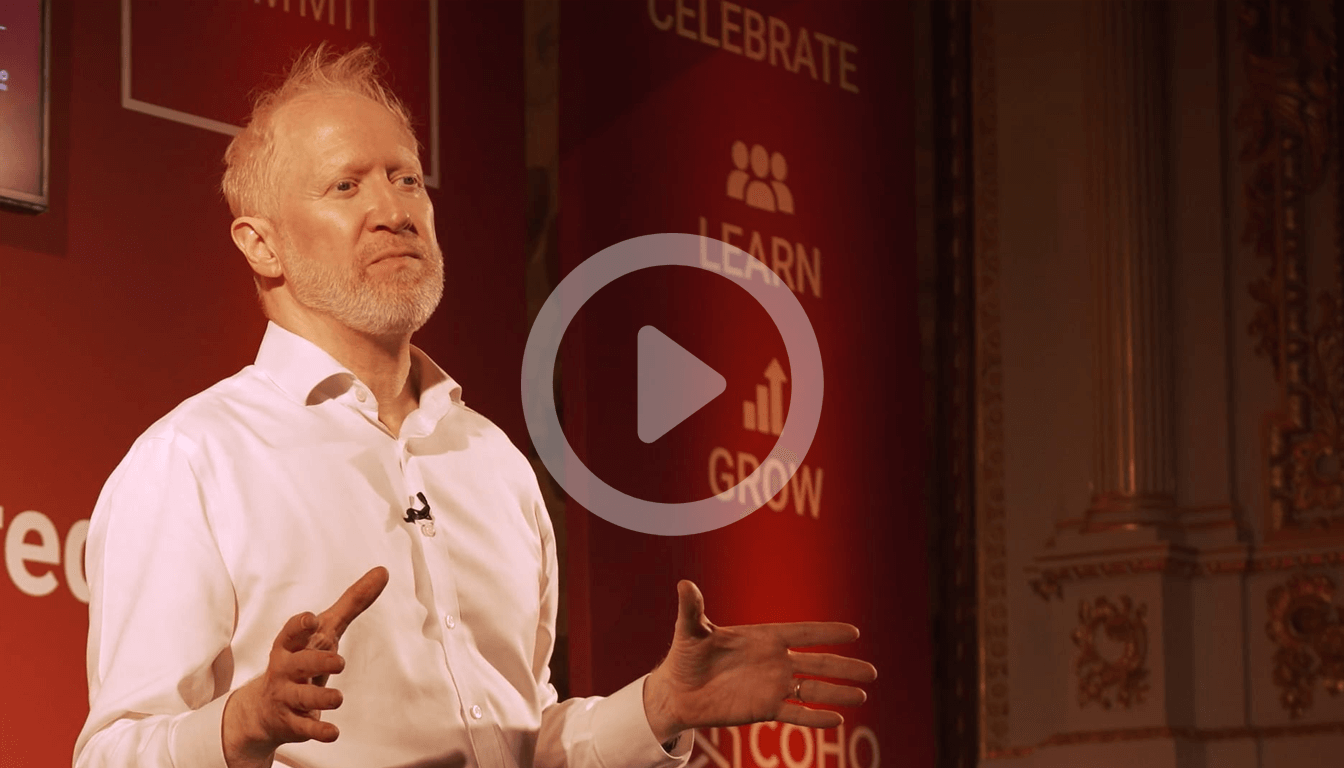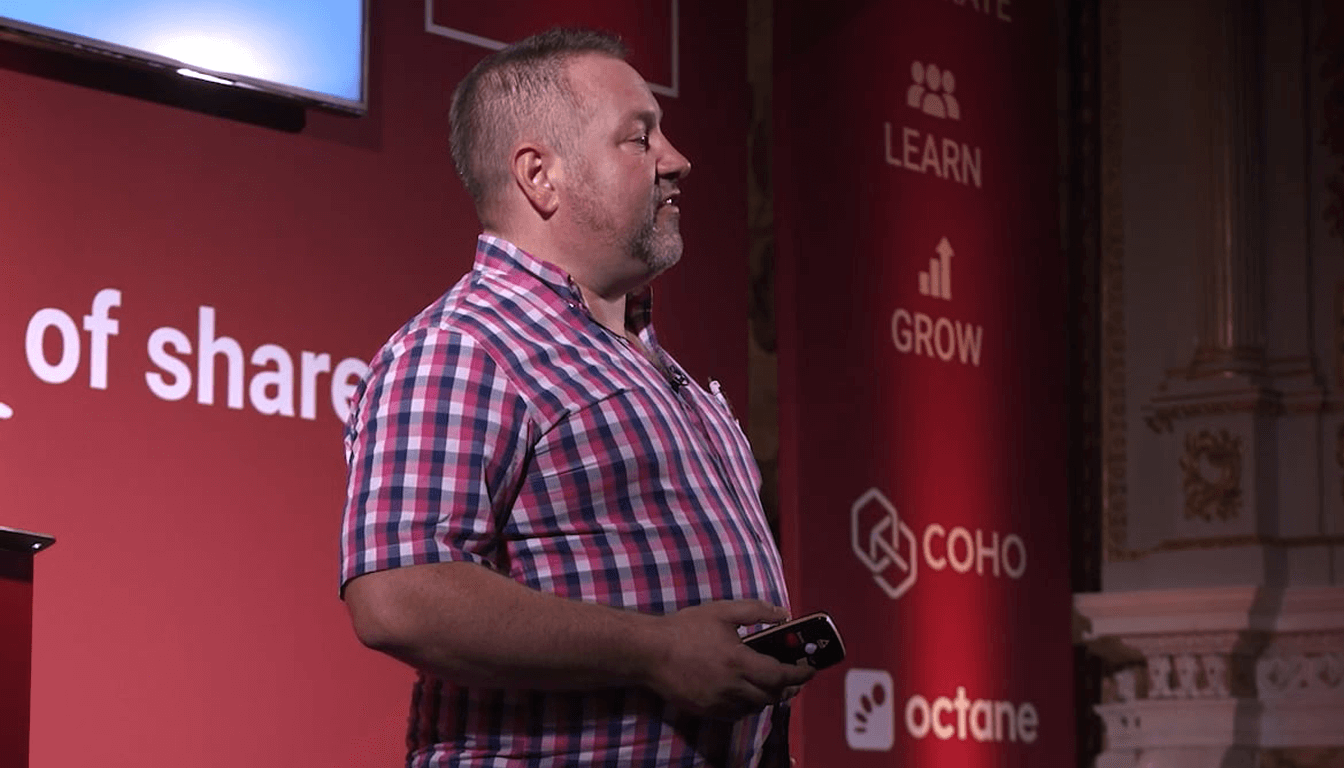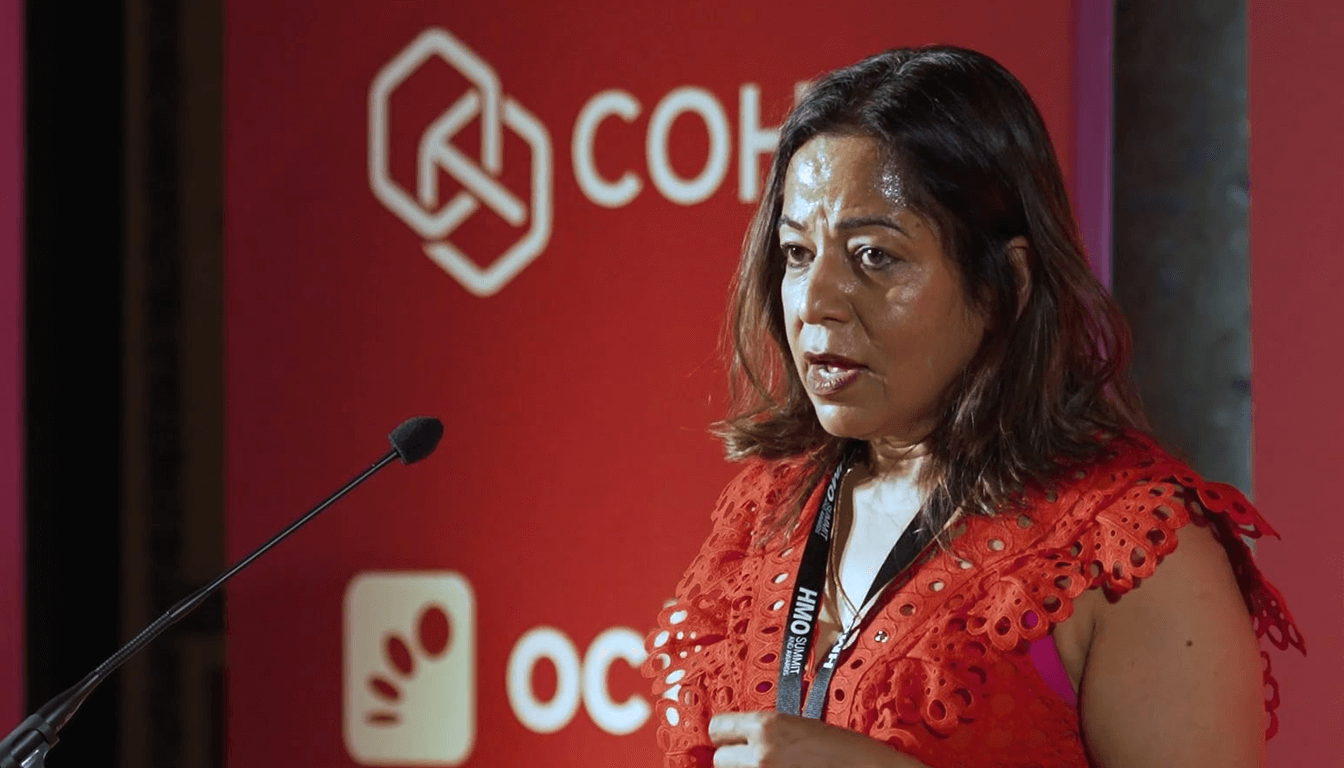There are two kinds of property investors. The first kind treats property like a hobby they hope will eventually pay for itself: a string of small buys, hands-on management, and the occasional rush from a “successful” refit. The second kind treats property like a business to be scaled: systems, partners, capital allocation and an appetite for much bigger, fewer deals that move the needle. At the HMO Summit 2025, Simon Zutshi pulled no punches about which camp he thinks you should be in if you want to grow seriously. His message isn’t motivational fluff,it’s a tactical roadmap built on three decades of hits and mistakes, and it focuses on one simple idea: do fewer things that are far more profitable, and get other people to do the rest.
What follows is a long-form unpacking of Simon’s talk: the three traps that stop most investors from scaling, the mindset shifts that actually free you to go bigger, the practical routes for building large portfolios (including specialist supported housing), and the immediate actions you can take in the next 30–90 days to start scaling with intent.
The three traps that keep investors small
Simon began with a diagnostic that should be obvious but is usually ignored: most investors are stuck in one of three traps, and each trap quietly reduces your upside.
The first is the “landlord trap.” You love the linen smell of a freshly painted room, you enjoy meeting tenants, and the day-to-day management feels satisfying. But the cost of doing everything yourself is opportunity cost. When you fix kettles at midnight or chase deposits, you aren’t sourcing the next acquisition. Simon’s point is blunt: unless you genuinely want to manage for the rest of your life, outsource operations. The small hit to your net yield from hiring good agents or an operations manager is usually dwarfed by the deals you will source with freed-up time.
The second trap is the “hamster wheel.” Many ex-corporates jump into property and run on autopilot: buy, refurb, refinance, repeat. They measure success by transaction count rather than by strategic value. Simon recommends stepping off the wheel periodically. If your target is financial freedom, ask whether the next dozen small deals actually move you closer to that freedom or simply keep you busy. Sometimes growth is about doing fewer deals that return much more capital and can be scaled via partners or institutional buyers later.
The third trap is complacency. Success breeds comfort: rents rise, cash flows warm up, and you stop pressing the pedal. But the market evolves,legislation changes, capital costs shift, tenant expectations rise,and complacency leaves your portfolio exposed. Simon’s warning: don’t confuse stability with excellence. Keep improving the product, keep raising standards, and keep hunting the next strategic lever.
Recognising which trap you’re in is the first step. The next step is deliberately choosing a new operating model: delegate the routine, systematise what scales, and identify the bigger plays that dramatically increase return on time.
Mindset shifts: do less, but 10x better
Simon referenced three books as cognitive tools, and each supplies a practical reframe. “Who Not How” pushes you to find specialists who can execute better than you. “The Gap and the Gain” reframes progress: celebrate the steps you’ve taken rather than fixating on the ultimate mountain. And “10x is Easier than 2x” contains the paradox: to scale tenfold, you eliminate inefficiencies and focus only on what multiplies impact,not just do more of the same.
Put differently: scaling is not linear. Doubling your portfolio by repeating everything you do today will cost proportional time and stress. Tenfold growth requires redesigning the business: institutional partners, delegated operation, targeted product plays (e.g., larger HMOs, supported housing), and repeatable templates. That means more planning and less tinkering. It means accepting a smaller share of a much bigger pie in exchange for outsized total returns.
Practical scaling routes: fewer, larger, replicable deals
Simon is explicit about his chosen path: he wants to build very large programmes of specialist housing,in his case, supported housing for vulnerable groups,and he is assembling partners, capital and lease structures to scale quickly. That model reveals a blueprint you can adapt.
First, pick a thesis that lends itself to scale. For Simon that’s supported housing: long-term leases to care providers, higher per-unit rents, and commercial lease structures. The attractiveness is threefold: predictable income streams, institutional appetite for well-structured deals, and the ability to leverage long-term contracts to access commercial financing or forward sale structures.
Second, use the “who not how” model to partner. You don’t need to be the care expert if you can partner with one. Your value becomes asset origination, soft asset management and capital structuring; the partner provides service delivery and operational know-how. That division is how Simon and others can assemble large portfolios quickly,they’re not reinventing every capability themselves.
Third, standardise. Create templates for acquisitions (checklists, feasibility criteria), specifications for conversions (room sizes, compliance, fixtures), and an onboarding pack for operations and care providers. Standardisation is what allows you to buy multiple assets and convert them quickly without reinventing the wheel each time.
Fourth, consider capital packaging. Simon offered a practical model: assemble a pool of partners and allocated capital (he described pooling £20m across a handful of participants). This means you can move fast on bids and access preferential terms from vendors. The mechanics vary (joint ventures, SPVs, forward funding), but the principle is the same: pooled capital buys speed.
Finally, think exit early. Institutional buyers and pension funds increasingly eye neatly organised HMO portfolios and supported housing stock. Building with an exit in mind,documentation, systems, compliance,makes later scale sales or refinancing smoother and more valuable.
Specialist supported housing: a case study in scalable impact
There’s another reason Simon champions supported housing beyond the financials: social utility. He described working with a partner who optimises small, dignified housing units for vulnerable people (learning-disabled adults, high-dependency needs) where care is bundled, leases are long, and outcomes are measurable. That model can be highly profitable and social.
But Simon was careful: it’s not for the faint-hearted. Contracts can be complex; some management contracts are not full-repairing as investors assume; local authorities and providers have exacting standards. The path to success is discipline and due diligence: secure full-repairing leases where possible, vet your provider partners, and model long-term maintenance accurately. When done rightly, though, supported housing can be a win-win: stable revenue, social impact, and strong capital appetite.
Tactical 30–90 day actions for scaling
Simon didn’t leave the audience with vague exhortations; he gave tactical, time-bound advice you can use immediately.
If you’re managing your own portfolio and want to scale, start by hiring or contracting out the day-to-day management this month. Freeing even eight hours a week for deal sourcing compounds quickly.
If you’re running small deals and want to scale quality rather than quantity, spend the next 30 days defining a single repeatable product: target geography, room specification, tenant cohort, and a procurement spec. Convert that into a short “acquisition scorecard” you use to underwrite every deal the same way.
If you’re serious about big plays, use the next 60–90 days to identify a specialist partner (supported housing operator, care provider, or institutional investor). Start conversations now: strategy requires aligned partners, not last-minute co-investors. And if you need capital, talk to potential partners openly,Simon emphasised the power of telling people your stretch goal: it catalyses introductions and partners.
Finally, exploit market timing. Simon called out a practical window: when the market slows (summer months, holidays, etc.), motivated sellers and more attentive agents create opportunity. If you want to move fast, design your pipeline to act in these quieter windows.
Conclusion: scale is a decision, not a lottery
Simon Zutshi’s core argument is that scaling property investing is a deliberate business transformation. It requires you to stop doing the things that feel good but don’t scale, to systematise what does, to partner where you lack expertise, and to pick the product types that can be systemised and sold at scale. It also requires a mindset shift: ambition measured by the quality of deals and the efficiency of capital, not the number of buy-to-lets on the spreadsheet.
If you want next-step support, Simon suggested practical mechanics: join a mastermind, recruit partners with complementary skills, make a short list of target assets you’d snap up if capital were available, and tell the right people what you’re doing. The market is changing fast; exits are happening; buyers are circling well-organised portfolios. If you want to grow, now is the time to stop tinkering and build a model that’s repeatable, fundable and defensible.
There are two kinds of property investors. The first kind treats property like a hobby they hope will eventually pay for itself: a string of small buys, hands-on management, and the occasional rush from a “successful” refit. The second kind treats property like a business to be scaled: systems, partners, capital allocation and an appetite for much bigger, fewer deals that move the needle. At the HMO Summit 2025, Simon Zutshi pulled no punches about which camp he thinks you should be in if you want to grow seriously. His message isn’t motivational fluff,it’s a tactical roadmap built on three decades of hits and mistakes, and it focuses on one simple idea: do fewer things that are far more profitable, and get other people to do the rest.
What follows is a long-form unpacking of Simon’s talk: the three traps that stop most investors from scaling, the mindset shifts that actually free you to go bigger, the practical routes for building large portfolios (including specialist supported housing), and the immediate actions you can take in the next 30–90 days to start scaling with intent.
The three traps that keep investors small
Simon began with a diagnostic that should be obvious but is usually ignored: most investors are stuck in one of three traps, and each trap quietly reduces your upside.
The first is the “landlord trap.” You love the linen smell of a freshly painted room, you enjoy meeting tenants, and the day-to-day management feels satisfying. But the cost of doing everything yourself is opportunity cost. When you fix kettles at midnight or chase deposits, you aren’t sourcing the next acquisition. Simon’s point is blunt: unless you genuinely want to manage for the rest of your life, outsource operations. The small hit to your net yield from hiring good agents or an operations manager is usually dwarfed by the deals you will source with freed-up time.
The second trap is the “hamster wheel.” Many ex-corporates jump into property and run on autopilot: buy, refurb, refinance, repeat. They measure success by transaction count rather than by strategic value. Simon recommends stepping off the wheel periodically. If your target is financial freedom, ask whether the next dozen small deals actually move you closer to that freedom or simply keep you busy. Sometimes growth is about doing fewer deals that return much more capital and can be scaled via partners or institutional buyers later.
The third trap is complacency. Success breeds comfort: rents rise, cash flows warm up, and you stop pressing the pedal. But the market evolves,legislation changes, capital costs shift, tenant expectations rise,and complacency leaves your portfolio exposed. Simon’s warning: don’t confuse stability with excellence. Keep improving the product, keep raising standards, and keep hunting the next strategic lever.
Recognising which trap you’re in is the first step. The next step is deliberately choosing a new operating model: delegate the routine, systematise what scales, and identify the bigger plays that dramatically increase return on time.
Mindset shifts: do less, but 10x better
Simon referenced three books as cognitive tools, and each supplies a practical reframe. “Who Not How” pushes you to find specialists who can execute better than you. “The Gap and the Gain” reframes progress: celebrate the steps you’ve taken rather than fixating on the ultimate mountain. And “10x is Easier than 2x” contains the paradox: to scale tenfold, you eliminate inefficiencies and focus only on what multiplies impact,not just do more of the same.
Put differently: scaling is not linear. Doubling your portfolio by repeating everything you do today will cost proportional time and stress. Tenfold growth requires redesigning the business: institutional partners, delegated operation, targeted product plays (e.g., larger HMOs, supported housing), and repeatable templates. That means more planning and less tinkering. It means accepting a smaller share of a much bigger pie in exchange for outsized total returns.
Practical scaling routes: fewer, larger, replicable deals
Simon is explicit about his chosen path: he wants to build very large programmes of specialist housing,in his case, supported housing for vulnerable groups,and he is assembling partners, capital and lease structures to scale quickly. That model reveals a blueprint you can adapt.
First, pick a thesis that lends itself to scale. For Simon that’s supported housing: long-term leases to care providers, higher per-unit rents, and commercial lease structures. The attractiveness is threefold: predictable income streams, institutional appetite for well-structured deals, and the ability to leverage long-term contracts to access commercial financing or forward sale structures.
Second, use the “who not how” model to partner. You don’t need to be the care expert if you can partner with one. Your value becomes asset origination, soft asset management and capital structuring; the partner provides service delivery and operational know-how. That division is how Simon and others can assemble large portfolios quickly,they’re not reinventing every capability themselves.
Third, standardise. Create templates for acquisitions (checklists, feasibility criteria), specifications for conversions (room sizes, compliance, fixtures), and an onboarding pack for operations and care providers. Standardisation is what allows you to buy multiple assets and convert them quickly without reinventing the wheel each time.
Fourth, consider capital packaging. Simon offered a practical model: assemble a pool of partners and allocated capital (he described pooling £20m across a handful of participants). This means you can move fast on bids and access preferential terms from vendors. The mechanics vary (joint ventures, SPVs, forward funding), but the principle is the same: pooled capital buys speed.
Finally, think exit early. Institutional buyers and pension funds increasingly eye neatly organised HMO portfolios and supported housing stock. Building with an exit in mind,documentation, systems, compliance,makes later scale sales or refinancing smoother and more valuable.
Specialist supported housing: a case study in scalable impact
There’s another reason Simon champions supported housing beyond the financials: social utility. He described working with a partner who optimises small, dignified housing units for vulnerable people (learning-disabled adults, high-dependency needs) where care is bundled, leases are long, and outcomes are measurable. That model can be highly profitable and social.
But Simon was careful: it’s not for the faint-hearted. Contracts can be complex; some management contracts are not full-repairing as investors assume; local authorities and providers have exacting standards. The path to success is discipline and due diligence: secure full-repairing leases where possible, vet your provider partners, and model long-term maintenance accurately. When done rightly, though, supported housing can be a win-win: stable revenue, social impact, and strong capital appetite.
Tactical 30–90 day actions for scaling
Simon didn’t leave the audience with vague exhortations; he gave tactical, time-bound advice you can use immediately.
If you’re managing your own portfolio and want to scale, start by hiring or contracting out the day-to-day management this month. Freeing even eight hours a week for deal sourcing compounds quickly.
If you’re running small deals and want to scale quality rather than quantity, spend the next 30 days defining a single repeatable product: target geography, room specification, tenant cohort, and a procurement spec. Convert that into a short “acquisition scorecard” you use to underwrite every deal the same way.
If you’re serious about big plays, use the next 60–90 days to identify a specialist partner (supported housing operator, care provider, or institutional investor). Start conversations now: strategy requires aligned partners, not last-minute co-investors. And if you need capital, talk to potential partners openly,Simon emphasised the power of telling people your stretch goal: it catalyses introductions and partners.
Finally, exploit market timing. Simon called out a practical window: when the market slows (summer months, holidays, etc.), motivated sellers and more attentive agents create opportunity. If you want to move fast, design your pipeline to act in these quieter windows.
Conclusion: scale is a decision, not a lottery
Simon Zutshi’s core argument is that scaling property investing is a deliberate business transformation. It requires you to stop doing the things that feel good but don’t scale, to systematise what does, to partner where you lack expertise, and to pick the product types that can be systemised and sold at scale. It also requires a mindset shift: ambition measured by the quality of deals and the efficiency of capital, not the number of buy-to-lets on the spreadsheet.
If you want next-step support, Simon suggested practical mechanics: join a mastermind, recruit partners with complementary skills, make a short list of target assets you’d snap up if capital were available, and tell the right people what you’re doing. The market is changing fast; exits are happening; buyers are circling well-organised portfolios. If you want to grow, now is the time to stop tinkering and build a model that’s repeatable, fundable and defensible.









